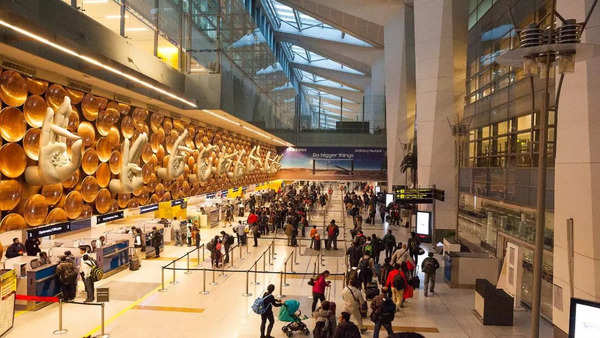


Prayagraj is currently at the epicenter of a historic transformation as it hosts the once-in-144-year Mahakumbh, an event that has already redefined air travel in the region. Launched last month and set to culminate with the Shahi Snan on February 26, 2024, the Mahakumbh is attracting unprecedented numbers of pilgrims and tourists, which is reflected in the bustling activity at Prayagraj Airport.
The airport, which previously managed a steady flow of passengers, is now handling daily traffic levels that match those from a full month before the Mahakumbh began. Thanks to an expanded terminal and apron area, operations have extended into the night, allowing for a significant increase in flight departures. In fact, flight frequencies have more than quadrupled compared to pre-Mahakumbh times. As airfares soared to record levels, the government stepped in to address mounting complaints on social media. This intervention led to a collaborative effort between the authorities and airlines to boost capacity, upgrade aircraft to higher capacity models, and gradually stabilize the soaring fares.
Read more: The UK is offering 3000 Indians a chance to live, study, and work for free; know how to apply
According to exclusive data from aviation analytics firm Cirium, Prayagraj Airport can handle over 42 departures on some days, which is an astounding four-fold increase over previous figures. It’s interesting to note that SpiceJet is leading this rise, running 116 of the 283 weekly flights from the airport, followed by IndiGo with 82 departures. Despite entering the market later, Air India has 32 weekly flights scheduled. In addition, 28 weekly flights are provided by government-owned Alliance Air and 25 by Akasa Air. As evidence of SpiceJet’s strategic concentration on this profitable route, flights to Prayagraj currently account for almost 13% of the airline’s total domestic departures.
Connectivity has grown significantly as well. There are currently 17 distinct destinations connected to Prayagraj, with Delhi leading the pack with 87 weekly departures, followed by Mumbai with 53 and Bengaluru with 36. Prayagraj is not the only area benefiting from the increase in connectivity; other areas are also being affected. Ayodhya and Varanasi trips are becoming more and more common among pilgrims, which is causing heavy traffic on the main thoroughfares. For example, Varanasi is seeing 40% more departures this February than it did the previous year.
Read more: UAE launches Blue Visa: What it means and who can apply
As Prayagraj Airport climbs into the top 20 airports in India—outperforming hubs like Patna, Chandigarh, and even Goa’s Mopa—there is a growing conversation about the potential for Uttar Pradesh to leverage this momentum. With robust infrastructure and an expanding tourist circuit linking Prayagraj, Ayodhya, and Varanasi, the region is poised to offer a year-round travel experience, setting a promising precedent for managing future large-scale events such as the Olympics.

India’s aviation sector is thriving, with several airports handling millions of passengers annually. According to the Airports Authority of India (AAI), Indira Gandhi International Airport (DEL) in Delhi leads the rankings, Mumbai’s Chhatrapati Shivaji Maharaj Airport (BOM) follows with a 20.2% rise. Bangalore’s Kempegowda Airport (BLR) recorded 17.6% growth.
Hyderabad (HYD) and Chennai (MAA) saw 19.3% and 14.2% increases, while Kolkata’s Netaji Subhash Chandra Bose Airport (CCU) remains East India’s busiest. Ahmedabad (AMD) and Cochin (COK) posted strong gains, while Pune (PNQ) grew 19%. Goa’s Dabolim Airport (GOI) declined 17.8% due to Mopa Airport’s rise.